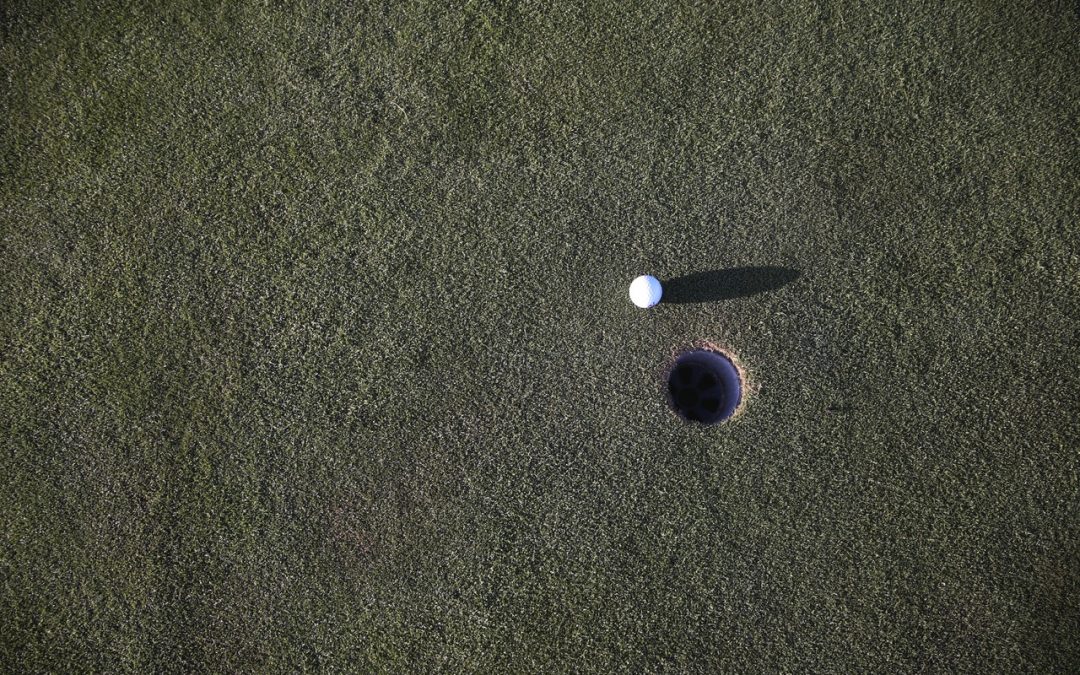Golf is a very old sport. In fact, while the modern sport refined by the Scottish is more than 500 years old, there are references in Dutch literature that seem to be talking about golf as early as the year 1261. More known for tradition than for cutting-edge technological advancements, the picture in your mind’s eye of a “typical golfer” most likely isn’t a young technophile. However, the sport of golf has seen a lot of science and technology infiltrate the game infiltrate the game in the last several decades, making gear, play style, and even courses obsolete. This series, Technology in Golf, looks to the advancements made or still to come in individual areas of the sport, from gear to courses to wearable tech. Stay tuned to DougAlbers.net for more installments! (See the previous installment, Golf Clubs)
The manufacturing of golf ball dates back to as early as the start of the 19th century. The initial balls were designed from animal skin and stuffed and compressed with the help of feathers. With the passage of time, the requirements of every sport keep changing because the people who play them become more pro at it. Their fitness, strength and the command of the game is enhanced and more advanced equipment are designed to meet them.
The golf ball has also undergone a number of changes and we have seen wooden, gutta percha, hand hammered gutta, bramble, and rubber balls. All these renditions finally led to the final ball which is being used during these times and have been tweaked a lot with the help of technology.
The best symbol to define the game of golf is a “circle”. The golfer starts from a point and comes back closer to it after completing a circle. The ball and the hole are also perfectly round. The modern ball has made the game of gold much more interesting and enjoyable for average players who want to play the game just to enjoy the fun element. Keeping in mind that none of the rules are violated while these amateurs play, the modern golf makes it fair and square for all kinds of players.
It is important that the golf ball must match the golf club as much as it matches the player. Although the golf balls are a bit expensive but this doesn’t make them unaffordable. The players must give a try to a couple of them before choosing the right one for themselves. The same should be done with the golf clubs as well. It is very important to keep in mind the swing and the effort which is utilized by the person while playing because they are essential determinant factors in choosing the right golf equipment.
In the mid-1990’s, the Top-Flite Strata golf ball was introduced which did the unimaginable in the industry. This three-piece ball played the role of two balls by being both high-spinning, soft-fleeting and well as a high-spinning ball of the irons. With rubber in its core which was encased in a thin middle or mantle layer, the only addition was a soft polyurethane cover.
Gradually, the three-piece ball met its counterpart which had a fast, soft, low-spinning core and a fast-spinning soft cover. This two-piece ball was designed with the latest technology and proved to be less expensive. Later, both the covers and the cores of the balls were softened by the companies.
The companies even approached the four-piece balls which had an extra mantel which acted as a conduit when the impact was applied and transferred extra energy to the core. All the kinds of balls are hard and you cannot cut or scrape them. They won’t even blemish so the only way to get rid of them is to lose them.
Today, it is easy to come up with a ball which has a large rubber core and carries the soft feel of the low-compression ball of the past years but will be able to fly far with a speed similar to that of a high-compression ball.

